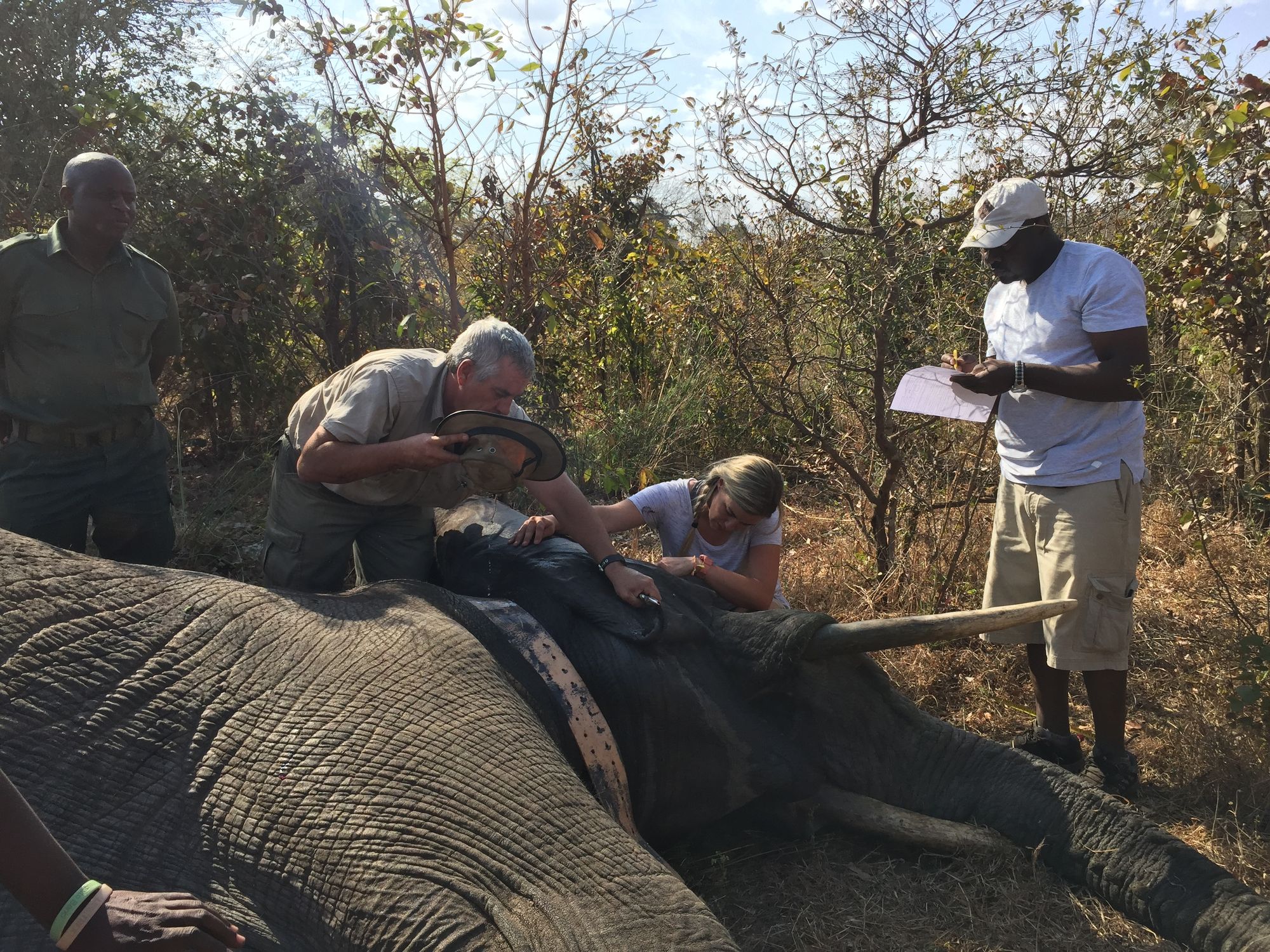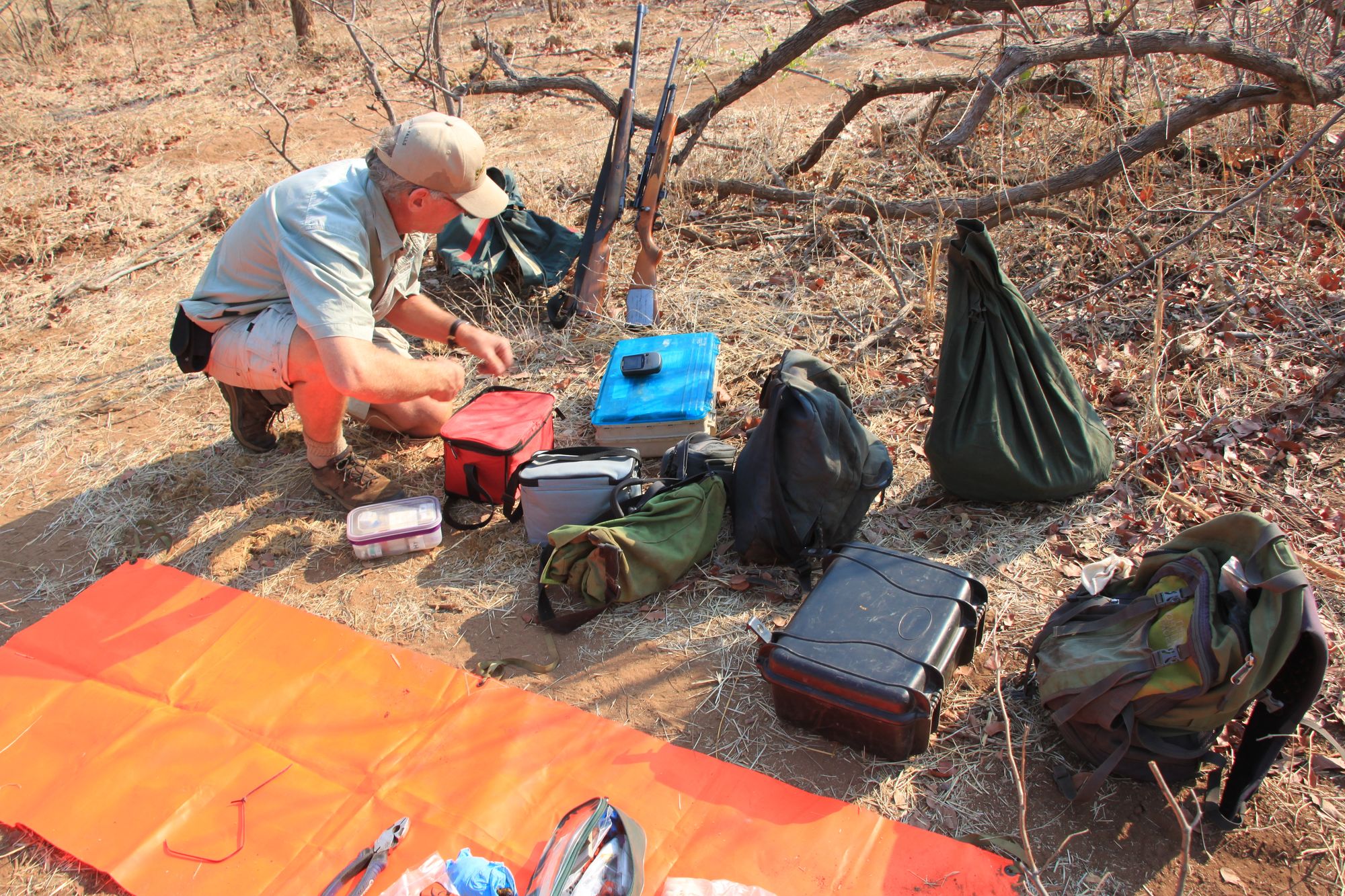![]()
For years tracking technology has been used to track cargo, airplanes, and other materials. Not much has been done in monitoring wildlife in Africa and elsewhere. One exception is in Zimbabwe under the Victoria Falls Elephant Project, where twenty elephants have been collared.
The elephant project is being spearheaded by Connected Conservation Trust (CCT), the Zimbabwe Parks and Wildlife Management Authority (Zimparks), and the Victoria Falls Wildlife Trust (VFW).
CCT Representative Malvern Karidozo told Warp News that the primary objective is to study the ecology and movement of elephants within Victoria Falls, in northwestern Zimbabwe, part of the Kavango-Zambezi Transfrontier Conservation Area (KAZA TFCA), and an area of multiple-use land systems.
“To understand various aspects of elephant movement, we use radio tracking of collared elephants. We are assessing elephant home ranges, distribution, habitat use, and transboundary movements, identifying the drivers of human-elephant conflict in rural and urban areas, and have initiated the development of a ward-based crop and property damage assessment scheme and experimentation with techniques to reduce conflict between elephants and humans, ”Karidozo said.

Karidozo explained that the remote-controlled tracking system uses batteries that can last for more than two years depending on the intervals at which the device is sending signals back to the user. He further highlighted that the tracking device bought from South Africa is durable, water-resistant, and weighs 15 kilograms.
“Even if the elephants fight, swim, or feed, the tracking device won’t fall off. The only chance of the device to stop working is when the built-in batteries discharge, but otherwise, they can last for years.”
Karidozo explained that the system uses the cell phone signal where it is available, but where it is not, the VHF signal is used instead.
Karidozo highlighted that preliminary findings show that elephants are transboundary moving in at least three Southern African countries.
"Our findings show a great deal of movement of bull elephants across this landscape and that the elephant populations are contiguous. A few corridors and or crossing points of movement between Zambezi National Park and Mosi Oa Tunya National Park in Zambia across the Zambezi River and between Kazuma National Park and Chobe Forest Reserve in Botswana have been identified, together with several critical refuge habitats," he said to Warp News.
He highlighted that the project intends to continue monitoring elephants' long-term ranging patterns, navigation in human-dominated landscapes, and mitigating human-elephant conflict within the study area. He stated that a team of researchers is continuing data analysis from the four years of data collection and producing detailed maps showing wildlife dispersal areas, land-use change over time about elephant movement, the effect of fences on elephant ecology, and the subsequent implications for conservation, in particular, elephant conservation and land use planning in protected areas, communal and urban areas.
In terms of land use in the national parks, Karidozo noted that the research would also identify animal corridors and then advise local authorities and other land developers to avoid such areas in the interest of wildlife.
Karidozo gave other findings as marked differences in average home range sizes for all the collared elephants reflecting varying strategies for obtaining food, water, and other resources; open and unimpeded movement corridors can help reduce conflict with human residents, while blocked passages can push elephants and other wildlife into new developments or villages, resulting in increased competition and elephants in the study spent more time in Protected Areas (PAs) than outside (communal lands and urban settlement)

Other findings include data from satellite tracking collars on eight of the twenty elephants in this study have identified a suite of wildlife dispersal areas or movement corridors across; southern African countries, suggesting the importance of cross-border coordination and electric fences around private reserves and new residential settlements are having a significant effect on the natural movement and dispersal of elephants in the area, an experimental novel and non-lethal human-elephant conflict mitigation.
The use of technology in Africa in research and everyday life is increasingly bridging the technology gap between the continent and western countries.






